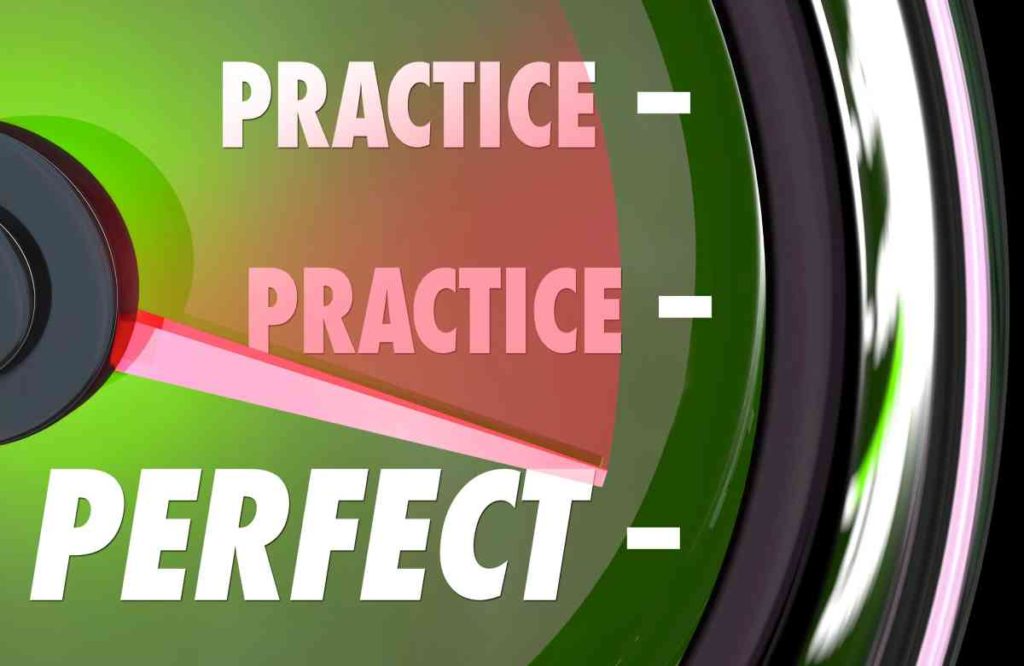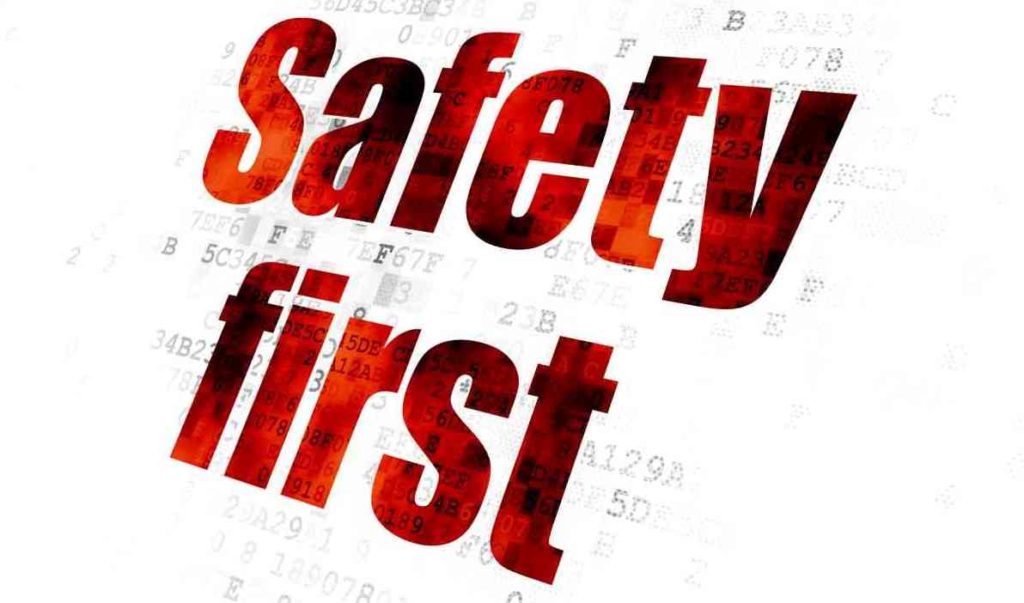When it comes to PT school and exams, written exams are only half of the battle. The other half are in the form of practical exams. Practical exams are the types of exams where you are evaluated by a professor or other examiner as you emulate a real-world scenario (typically involving a treatment technique, skill or application) and are graded accordingly.
Being evaluated in real-time by a professor on your practical skills can give plenty of students exam anxiety. This is actually pretty common with PT students. Thankfully, there are some universal steps you can take to help calm your nerves and be in a better mindset before your practical exam begins.
The quick overview of the tips to help with practical exam anxiety:
Tip 1: Keep in mind that this is a common issue for PT students. Just simply knowing this can immediately help to ease some anxiety.
Tip 2: Do practical run-throughs by practicing with fellow students or friends.
Tip 3: Practice explaining your techniques and your treatment choices out loud.
Tip 4: During the exam, it’s ok to pause and take a moment or two to think. Your professor(s) will actually appreciate this.
Tip 5: Make it a priority to avoid safety-based mistakes over technique-based mistakes.
These tips are all described in further detail below, so keep on reading!
As well, be sure to check out my article, How PT Students Can Manage and Reduce Stress in School for more insight when it comes to dealing with the stress of PT school.
Tip 1:Keep in mind that this is a common issue for PT students.
Just simply knowing and remembering this tip can help to ease your anxiety and nerves quite a bit. Knowing you’re not alone is a comforting feeling.
Sometimes we make things a bit harder on ourselves when we make the mistake of thinking that we’re the only one who is dealing with anxiety and pressure during practical exams. This simply isn’t the case.
You’re anxious because you want to do good – because you care about getting through PT school. THAT is honorable, and if you never had a single bit of anxiety during any one of your practical exams, it may be a signal that you aren’t taking things as seriously as you should.
Before you step foot in the room where you’ll be evaluated with your practical exam, take a few moments by yourself to just breathe and remind yourself that a multitude of nervous students (both currently and within the past) have been in the same boat as you are. And if THEY can make it through, so can you.
Tip 2: Do practical run-throughs by practicing with fellow students or friends
Before your practical exam comes up, you’ll have plenty of time to practice any and all of the topics you may potentially have to demonstrate on your practical evaluation.
Just mentally studying the topics, skills and the techniques you may need to present for your evaluation is simply not enough. You need to study and practice by rehearsing the exact same way you will need to demonstrate your abilities during the exam. This means you need to have someone who you can practice performing these skills on.
If you’re practicing transfers, it’s a pretty smart idea to have a body you can practice with. Same with assistive devices, and so on.
Therefore, find a practice partner, if possible. Practicing with a fellow student may be ideal since they can help point out mistakes you make, etc. Practice talking out loud as you go through and rehearse everything step by step. The more familiar you become with this process, the easier it will be to reproduce on exam day.
Do this for any potential topic, skill or technique the practical exam may present to you. If you’re getting ready for an orthopedic practical exam and you have the potential to be tested on five or ten areas, practice each one. A good way to do this is to write each topic down onto a strip of paper and put them in a bag, then randomly pull one out and do a run-through. Repeat this as much as needed.
The goal is to emulate the run-through as accurately as possible to the parameters of what your practical exam will be, which means that you’re going to need a body to have around for practicing on.
Tip 3: Practice explaining your techniques and your treatment choices out loud
This tip somewhat blends into the previous tip, but it’s distinct enough that it requires its own section. This is also something you can do when you don’t have a partner around.
A big part of studying for your practical exams should be mentally rehearsing general scripts that can apply to any potential technique or situation you may have to be examined on.
Having a general script ready to go in your head will save you from forgetting to communicate critical information during the heat of the moment.
A script can cover things like introducing yourself, explaining why you’ll be performing a particular skill or technique, how you’ll be performing it, etc. Having practiced these types of things will allow you to communicate more effectively, appear more confident and competent and allow your professor(s) or those evaluating you to better understand your rationale as you work your way through the process.
Tip 4: During the exam, it’s ok to pause and take a moment or two to think
When it comes time for the exam itself, I’d encourage you to take a moment before you initiate your treatment technique or clinical skill. The problem we often feel is that taking ten seconds to collect our thoughts feels like we’re taking ten minutes, which makes us feel nervous in all sorts of ways.
The truth is, taking a few seconds to collect your thoughts, even if you’re confident on what you’ll be doing, is a wise move to make. It’s ok to verbalize out loud that you’re just taking a few extra seconds to collect your thoughts. I always did this and verbalized it to the “patient” I was treating.
Even if I was just told to demonstrate a particular skill, I would still say to the “patient” “Ok, (patient’s name), we’re going to do X and I’d just like to take a moment here before we begin to ensure that I treat you as safely and effectively as possible.
First of all, there will be times where you’ll need to do this in the real world when you’re a practicing clinician. Second of all, it shows those evaluating you that you want to make sure that you’re being safe and selecting the most effective treatment/skill, etc. possible. They will appreciate this.
Just make sure that it’s no more than a handful of seconds, as if you take longer than this, it may appear as if you are completely unprepared for what you need to do next.
Tip 5: Make it a priority to avoid safety-based mistakes over technique-based mistakes
One of your biggest goals during any practical exam should be to ensure that any mistakes you make are technique-based rather than safety-based mistakes.
PT school is all about ensuring you keep yourself and your patients safe at all times. Your professors and evaluators know that you haven’t had much time to learn or perfect your hands-on treatment-based techniques. It’s more acceptable to them if you don’t get these quite right than if you compromise a patient’s safety in any sort of manner.
Again, this is why it can be a good idea to take a few extra seconds before beginning your skill or treatment demonstration. As they say: Safety first.
You’re much more likely to fail a practical exam because of a safety violation than a lackluster treatment technique.
Concluding remarks
It’s perfectly normal to have a bit of anxiety before practical exams, at least at one point or another. The key is to remember that it’s pretty normal and that it happens to the majority of PT students. It’s not easy to be directly evaluated on your performance towards information you’ve recently learned.
Therefore, if you find yourself having anxiety with your practical exams, try to replicate the exam as specifically as possible, which should involve having a practice partner. You’ll want to make sure you have a general script in your head that you can follow, which will help in a number of ways.
When it comes time for the actual practical examination, make sure to take a moment to collect your thoughts before you begin. Taking a few extra seconds before starting is nothing to sweat about, so long as it’s not a few minutes.
Above all else, make sure that you place patient safety skills (as well as YOUR safety) above your treatment skills. You’re more likely to fail from compromising patient safety than from poor treatment technique.
Just remember that many a PT student have made it through their practical exams, so you can too!
Grind hard. You got this.
Related articles
How PT Students Can Manage and Reduce Stress in School

Hi! I’m Jim Wittstrom, PT, DPT, CSCS, Pn1.
I am a physical therapist who is passionate about all things pertaining to strength & conditioning, human movement, injury prevention and rehabilitation. I created StrengthResurgence.com in order to help others become stronger and healthier. I also love helping aspiring students and therapists fulfill their dreams of becoming successful in school and within their clinical PT practice. Thanks for checking out my site!






